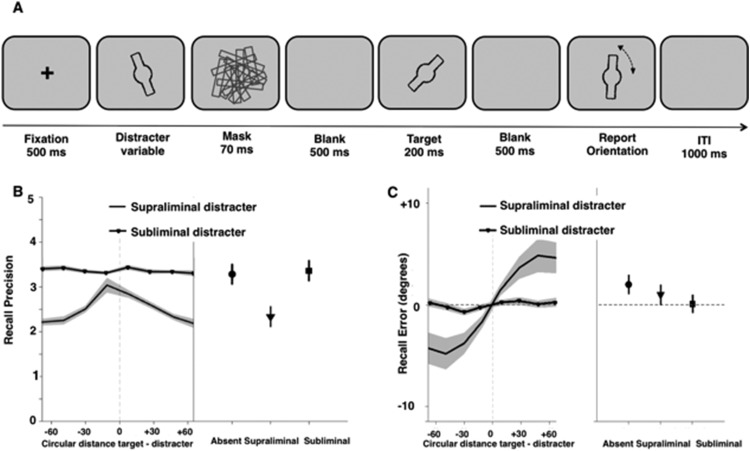Figure 3.
Design and results of the WM task used in Experiment 2. (A) A central fixation cross was presented for 500 ms followed by either the target or distracter orientation stimulus (distracter first on 80% of trials). Participants were instructed to report the orientation of the unmasked stimulus. Thus, the target was always unmasked and the distracter was always immediately followed by a mask. There was a 500-ms delay between offset of the first orientation stimulus (or the subsequent mask if the first orientation stimulus was the distracter) and onset of the second orientation stimulus. After another 500-ms delay, participants reported the target orientation by rotating a probe stimulus to the remembered target orientation by moving the computer mouse. (B) Mean recall precision (1 SD) for the distracter conditions as a function of target-distracter similarity (left) and mean overall recall precision for the two conditions (N = 23) in Experiment 2. For plotting purposes, the data for this and all similar figures depicting response error and recall precision were smoothed by using eight overlapping bins in the analysis where adjacent bins overlap by 50% and each bin contains 25% of the overall data. Shaded areas and error bars reflect ±1 standard error. (C) Mean recall error for the supraliminal and subliminal conditions as a function of target-distracter similarity (left) and mean overall recall error for absent, supraliminal, and subliminal conditions (N = 23) in Experiment 2.

